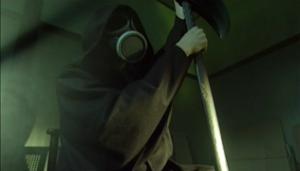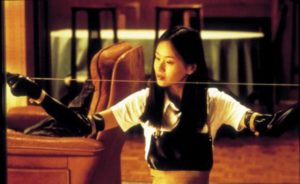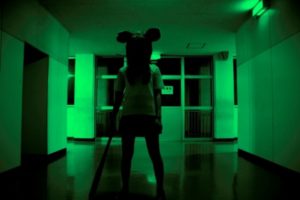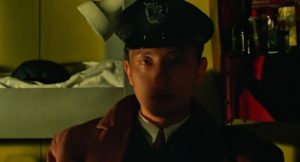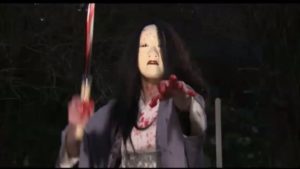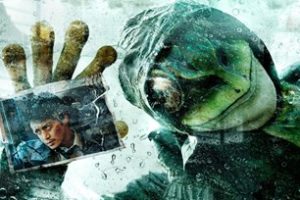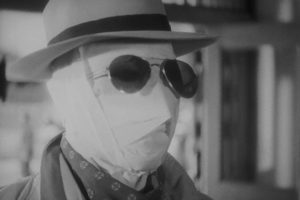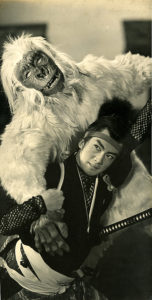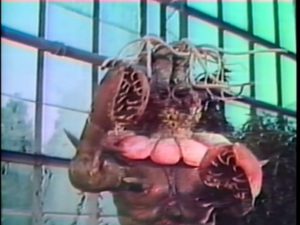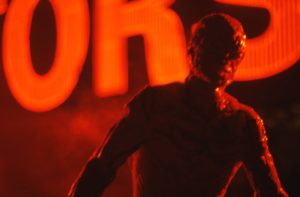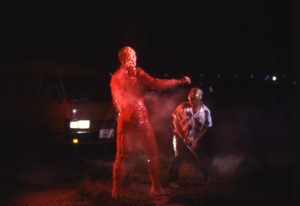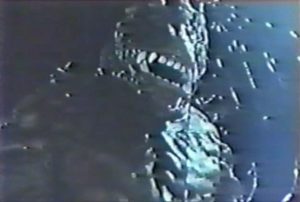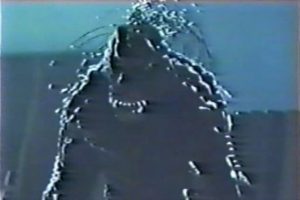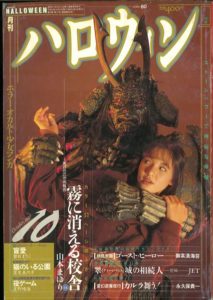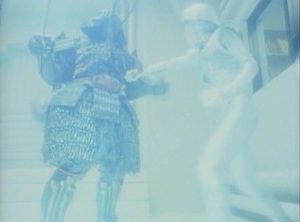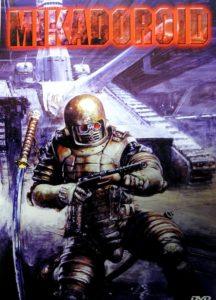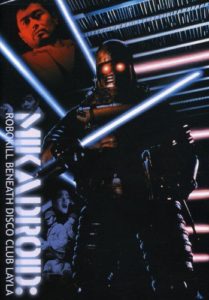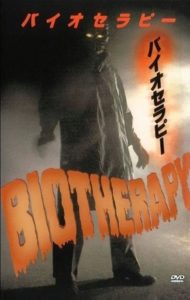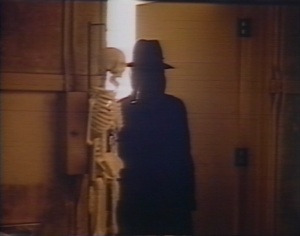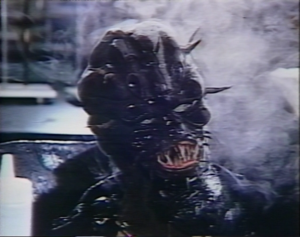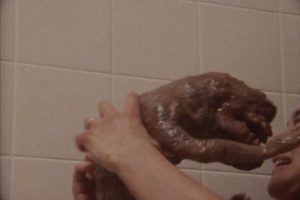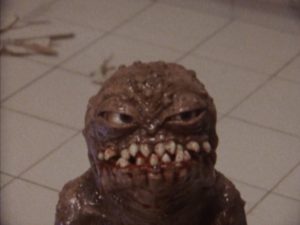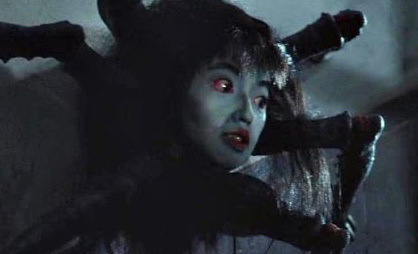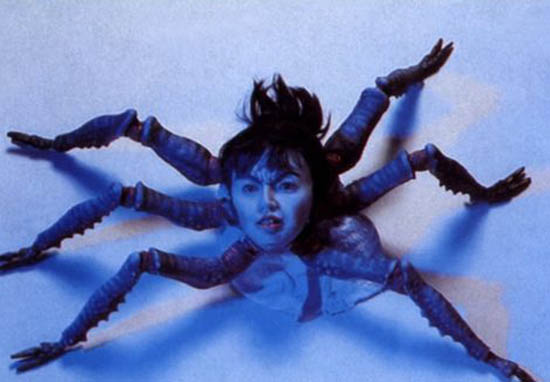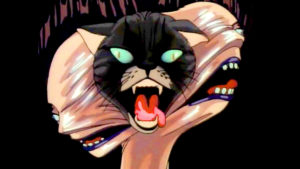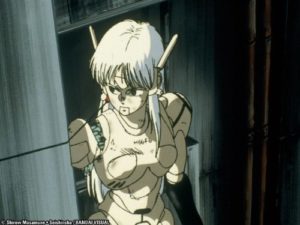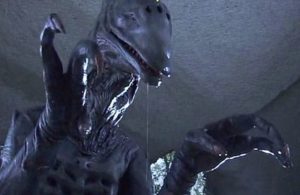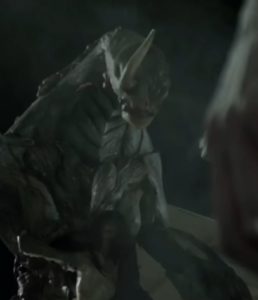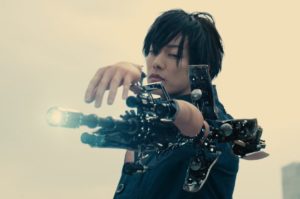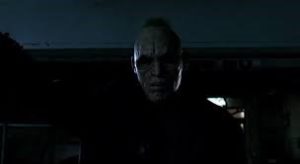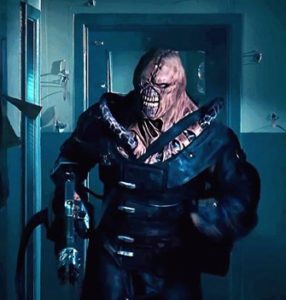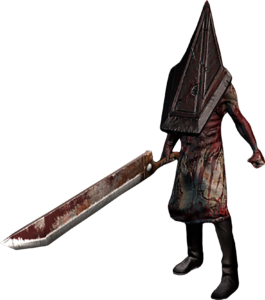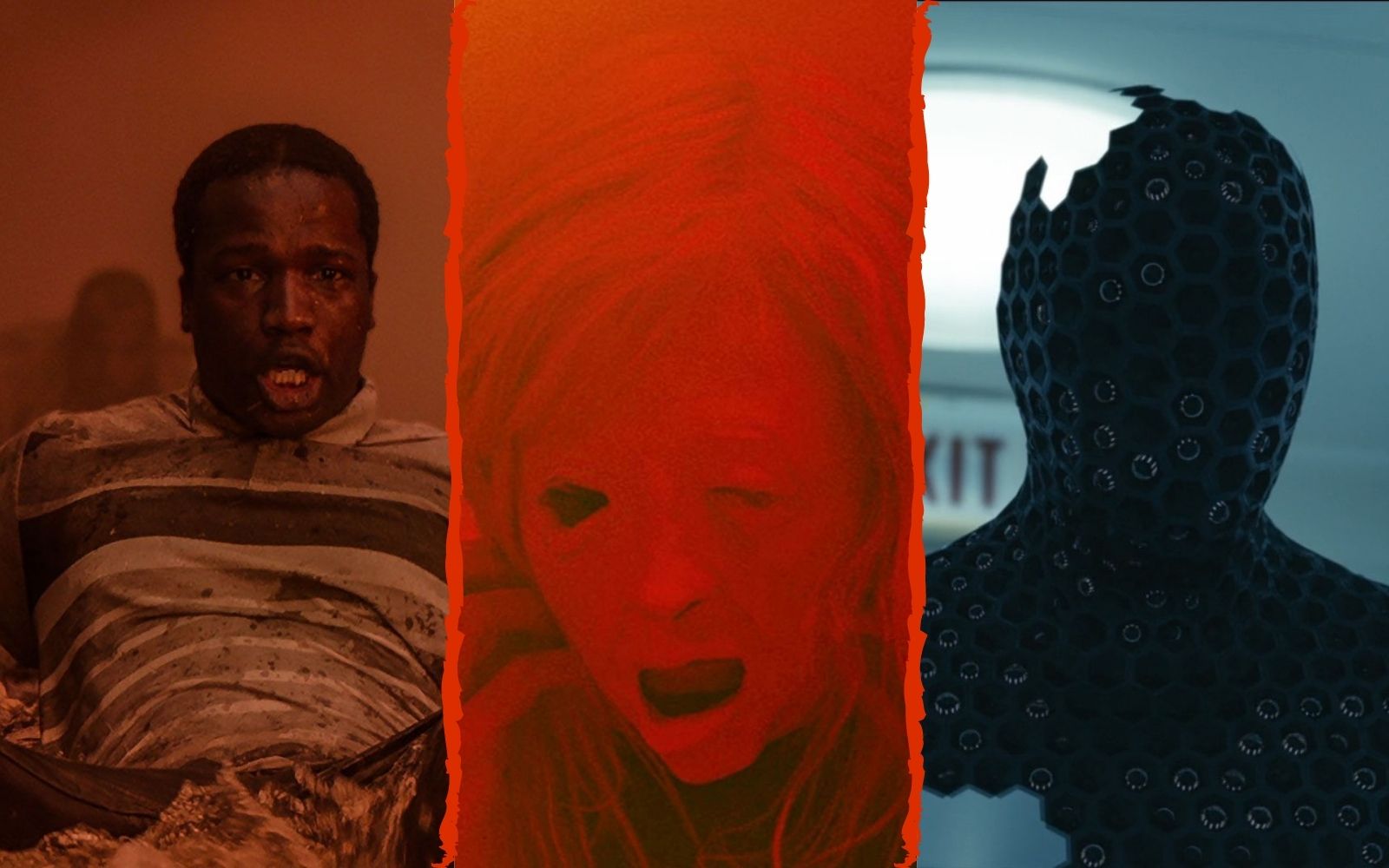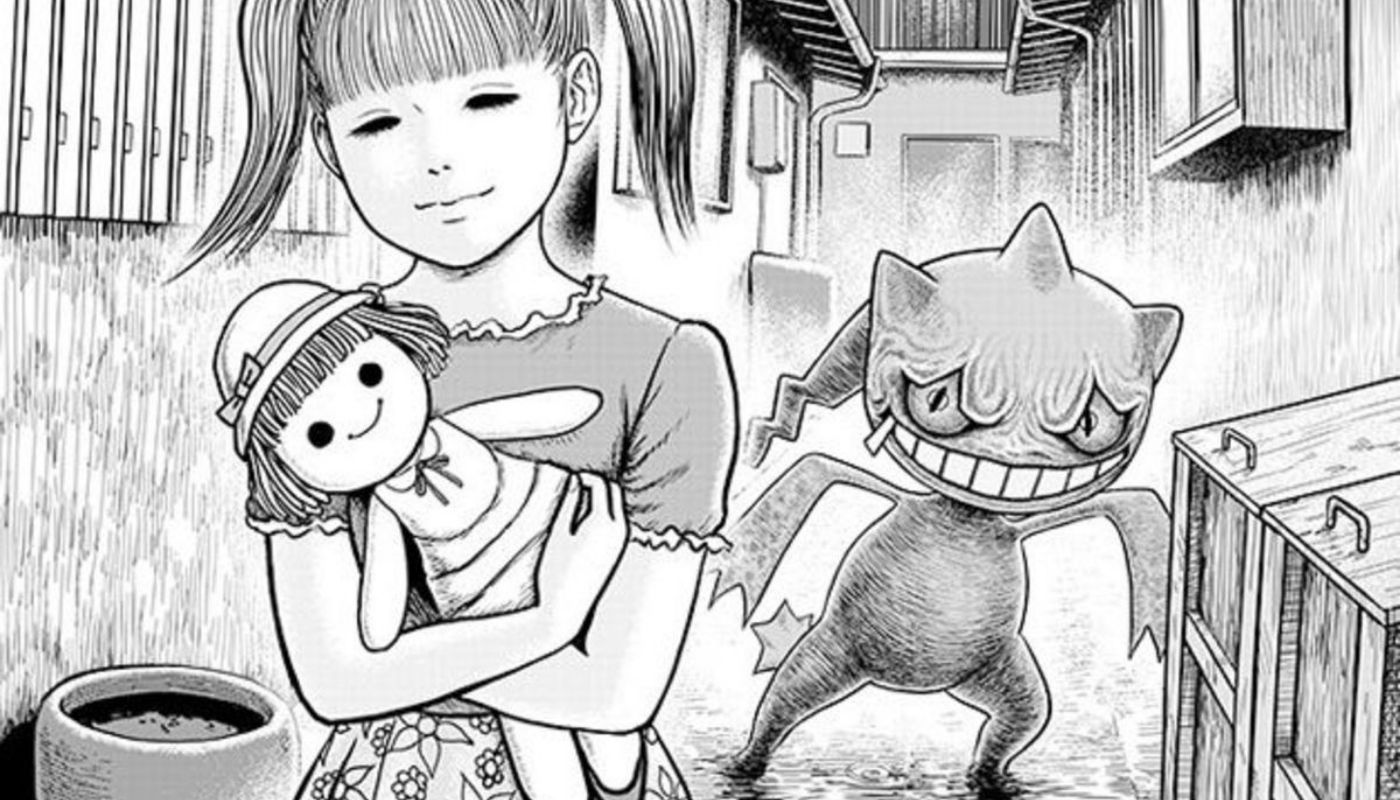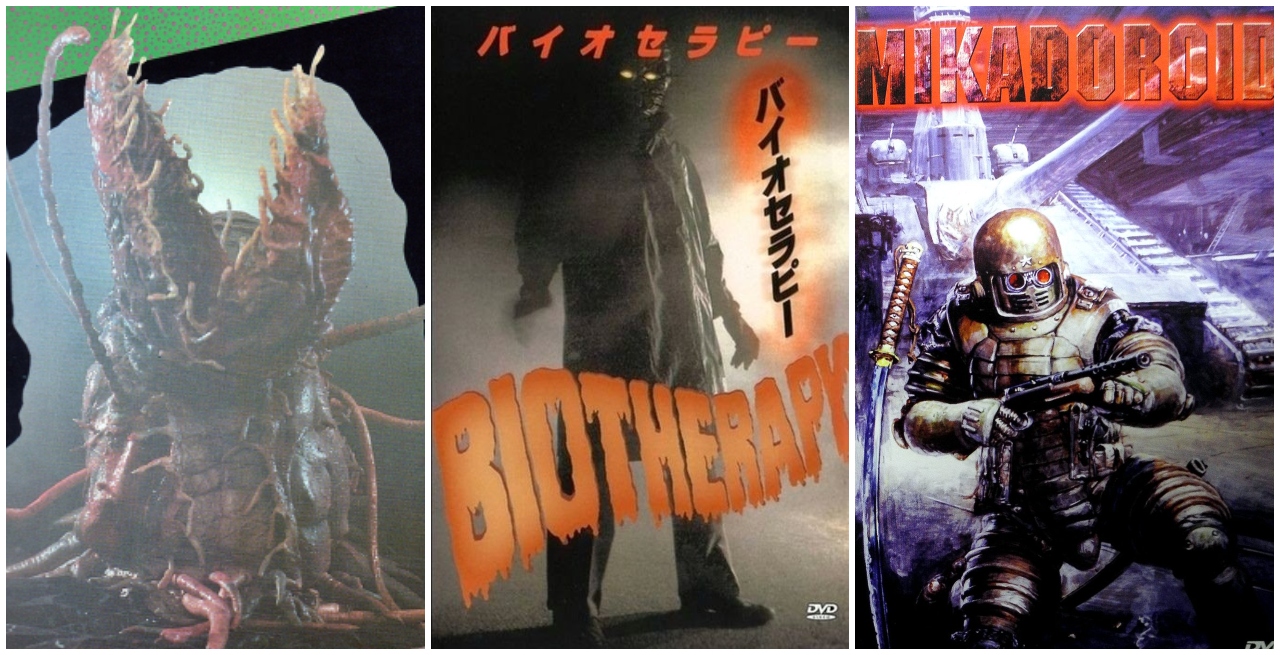
It’s Halloween and I therefore decided to do a recap of horror-related tropes or subgenres in Japanese entertainment! An obvious choice, taking up a fair amount of the genre landscape, are slashers – something much less associated to Japanese cinema.
Now, clearly, Japan has no shortage of iconic slasher movies:
…However, as my core interest is fundamentally monsters, mundane human slasher characters just won’t suffice. To that end, we want to look at a subcategory that I call, for lack of a better term, “slasher monsters”. To clarify:
- “Slashers” are villains who stalk and kill a group of regular-folk protagonists (who are usually cut off from the help of the rest of society) one by one. Slashers generally work alone but stopping them serves as a significant obstacle to the hero.
- “Monsters” are physically abnormal creatures, either due to mutation, or magic, or displacement in space and time, which makes them incongruous with the setting of the narrative.
- “Slasher monsters” are characters that fill both the role of slasher and monster, living at the intersection of the spaces:
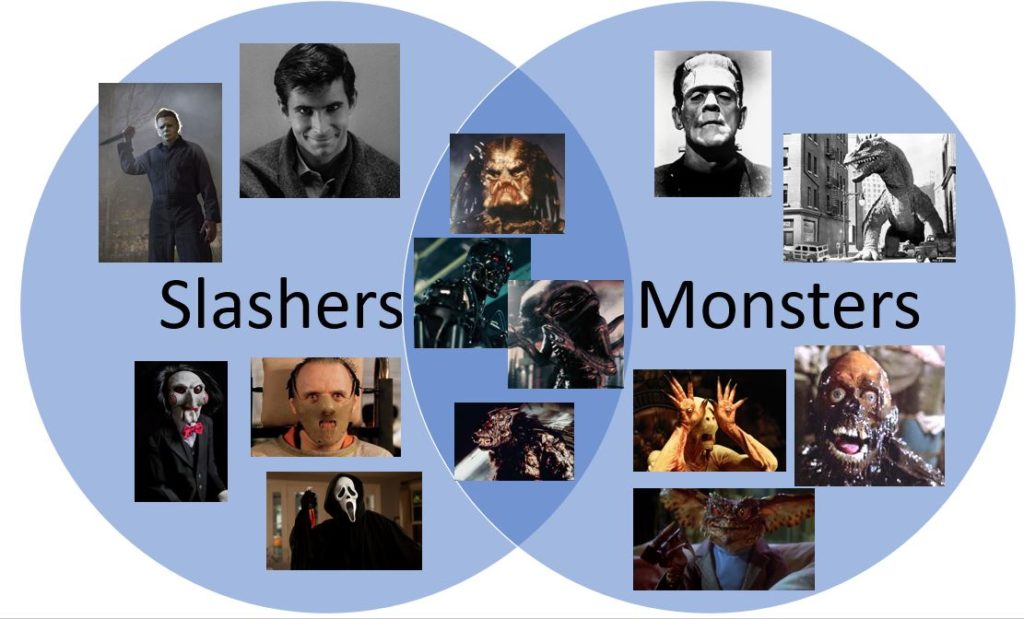
Now, it’s arguable that these kinds of monsters have been around forever, and you can certainly make a case for various characters across the whole history of Japanese cinema, such as the Invisible Man in the 40s and 50s, the Jaguma ape in the 60s, the Venus Fly Trap in the 70s. But the slasher genre as we know it is really a child of the 1980s, so we’ll focus our attention around that timeframe. In that heyday, slashers were quite popular in Japan, from imports (see my previousretrospective on Friday the 13th, which somehow missed the manga short Final Girl), to co-productions (did you know that Daiei was on the production committee for Cheerleader Camp?), to original features.
Whenever the topic of Japanese slasher flicks comes up, the elephant in the room will of course be 1988’s Evil Dead Trap. The focus of the film is on a TV crew who, upon receiving a copy of a snuff film, decide to go investigate an abandoned military base themselves instead of reporting anything to the authorities. Naturally, the place is booby-trapped to ribbons, so the group is picked off one-by-one by a mysterious cloaked figure.
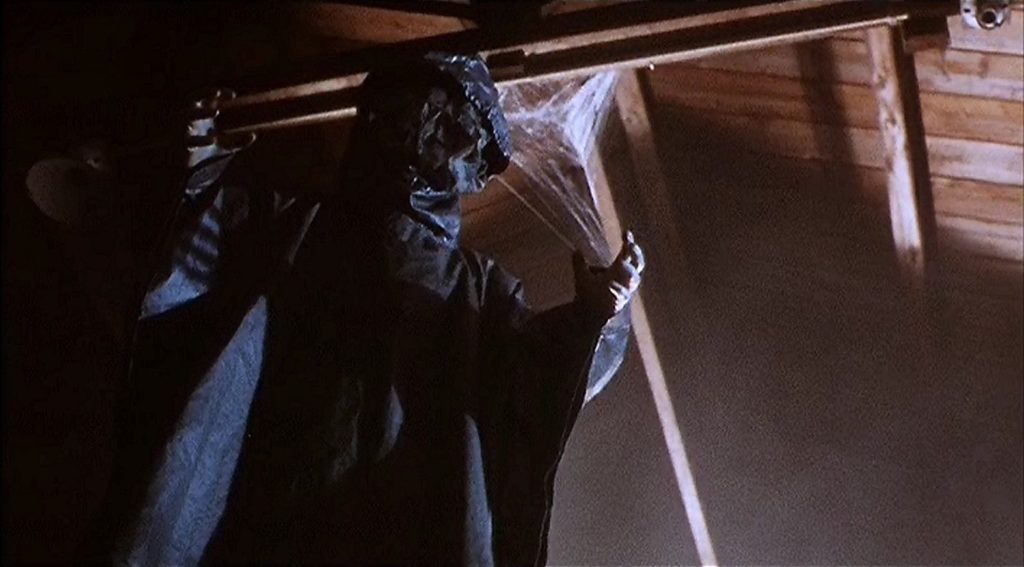
It may be a bit of a spoiler, but from the inclusion here, you can figure out that the killer Hideki is no mundane maniac. It turns out that he, much like the killer in a recent high-budget Hollywood flick (spoilers!) is actually a malformed conjoined twin bullying his brother into a murderous rampage. The effects here, both for the uncanny embryonic Hideki and his brother after suffering extreme burns, are great, and it was the picture that put Shinichi Wakasa on the map and led to the likes of Peacock King and his later Godzilla work. (The movie was followed by the misleadingly-titled Evil Dead Trap 2: Hideki, which was unrelated.)
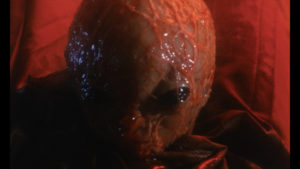
As you can surmise from the English title, Evil Dead Trap (in Japanese Shiryo no Wana) was named such to exploit the popularity of the Evil Dead movies, called Shiryo no Harawata in Japan, meaning “Entrails of Departed Spirits” (the Japanese titles of flicks like ReAnimator and Day of the Dead also leverage a “Shiryo no <something>” title format). The Japanese title of Evil Dead, however, was itself likely intended to invoke the nasty pink film series Tenshi no Harawata, AKA Angel Guts, and in full circle, the main character Nami in Evil Dead Trap is named after the lead from an Angel Guts flick.
Anyway, it’s not clear whether director Kazuo ‘Gaira’ Komizu was trying to invoke Angel Guts, Evil Dead, or both when he came up with his own “Entrails” series, Entrails of a Virgin and Entrails of a Beautiful Woman, both in 1986. Both movies combine pink softcore pornography with sexual violence and monster horror, so depending on one’s threshold, it could be a bit much. Entrails of a Virgin has a group of photographers in the woods getting stalked by a rapist mud monster. While there’s a memorable part at the end where a survivor gives birth to a monster baby, the monster for most of the movie itself is relatively showed in shadows that made getting satisfying screencaps difficult, so we don’t have any here. On the other hand, Entrails of a Beautiful Woman is a creature spectacle, as its story about a sexually assaulted woman reviving as a demon who kills off her attackers keeps things much more brightly lit.
1986 was quite a busy year for director Gaira, since he also made Guzoo: The Thing Forsaken by God – Part 1. The flick (pronounced like “gew-zew”) was produced specifically for the Japanese horror magazine V-Zone, but alas, the magazine ceased publication before a part 2 could be produced. It deals with a group of four schoolgirls on a trip to a remote, abandoned resort, where a tentacle monster lives in the mirrors and comes after them. The concept and monster design for the piece was by Hitoshi Matsuyama, who would go on to write Battle Girl: Living Dead in Tokyo Bay for Gaira (often cited as the first Japanese zombie movie), as well as direct a lot of direct to video monster stuff like Monster Commando, Space Hunter Miki, and Welcome to the Vampire Onsen. It’s not a bad monster design, kind of a tentacled venus flytrap sort of deal, but unfortunately the sound it makes when it attacks is somewhere between the squeaks from the rubber stretching in a balloon and a flatulent whoopie cushion.
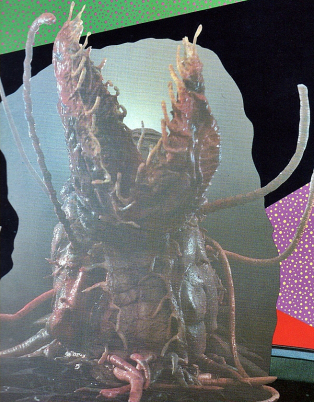
While the next movie’s name has Guzoo’s strange rhyming cadence and only-on-VHS status, 1987’s Conton‘s plot more echoes Entrails of a Beautiful Woman’s description about a wronged party turning into a monster and exacting gory vengeance on those that did them in, as the hero turns into a big nasty thing to go up against some yakuza at the climax. It’s the only directorial credit for Takuro Fukuda, but he’s since become a minor powerhouse of the TV tokusatsu screenwriting industry, writing for titles like Vampire Host, Ultraman Max, Ultraseven X, Kamen Rider Ghost, and Kamen Rider Sabre. I really wish Conton were available in better quality, since the creature does look pretty good.
The protagonist’s transformation towards the end doesn’t come out of the blue, since it’s set up across the whole flick through a series of dreams where he’s stalked by a mysterious armored demon.
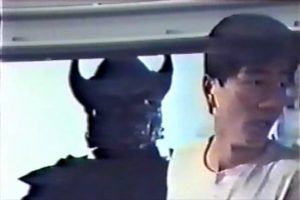
The demon kind of resembles a samurai, which brings up a bit of a recurrent theme in the genre: jidai geki-inspired stuff is all over the place in Japanese monster slashers. Heck, it’s even around in American-made ones (look at BloodBeat or Ninja III: The Domination), so it goes without saying that it’s been a factor in Japan’s own flicks as well. Let’s look at a few, shall we?
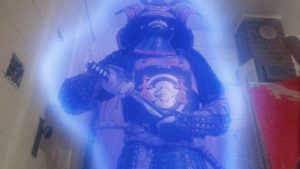
Because I love this particular franchise, I’ll start the “period piece influence” discussion with Zeiram. It’s pure science fiction, but like some other major scifi franchises (*cough* Star Wars), it invokes some samurai movie aesthetics, particularly with the title monster’s head looking like a kasa (a traditional straw hat) in the first movie. In the second movie, the hat is actually a hat, and underneath it she’s designed to evoke a kitsune (fox spirit).
Anyway, Zeiram is one of the most iconic and intimidating creatures in all of Japanese cinema, managing to exude pure malice doing little more than standing there…it’s very Jason Voorhees of her. Anyway, I won’t say too much since we’ve talked quite a bit about those movies on the Keita Amemiya podcast discussion, and expect me to do something more by the end of the year (the original Zeiram is turning 30 in December), but if you haven’t checked those out, get those movies and the OVA series ASAP! (The original film is hitting Blu-ray in the US, and Zeiram 2 is already out.)
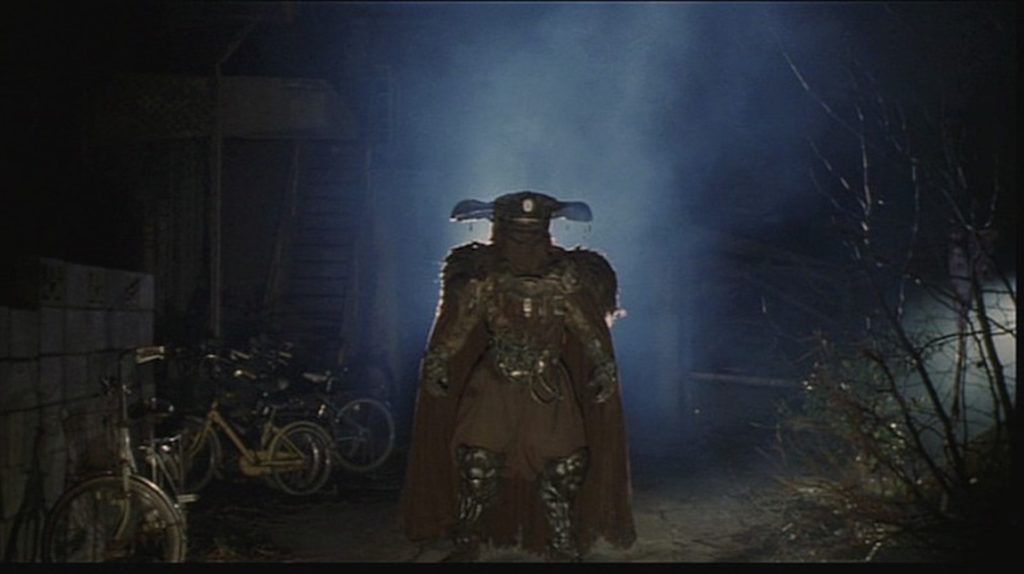
Zeiram’s combination of retro and sci-fi could also be seen the year prior in Macoto Tezka’s second theatrical outing, Monster Heaven: Ghost Hero. While nominally a sequel to 1986’s weird direct-to-video period-piece anthology Monster Heaven, Ghost Hero is completely different as it has a single plot throughout, all set in the modern day as a high-tech office building is terrorized by a maniac possessed by an ancient samurai spirit. There’s shades of Gremlins 2 in the premise, but the scene where the villain faces off against a glowing, holographic, silver-clad videogame heroine also foreshadows Iria and Zeiram’s impending series of duels across their own franchise. Anyway, Ghost Hero is a hell of a lot of fun, and hopefully Tezka eventually gets his due as a creative in his own right instead of getting pigeonholed as the guy who makes adaptations of his dad’s work.
Ghost Hero’s effects director Tomoo Haraguchi followed it up with a movie of his own (also with actor Masato Ibu, and a cameo by Tezka, to boot!), also featuring a killer sci-fi samurai: 1991’s Mikadroid, AKA Robokill Beneath Disco Club Layla (nobody calls it that, though). The film features an abandoned WW2-era killing machine reawakening in modern day under a night club, to predictable consequences. While not the best in the genre, the titular creature design is certainly memorable. In fact, it’s one of only a few on this list to ever get made into a vinyl figure!
Mikadroid was actually first conceived as a zombie flick titled “Mikado Zombie”, until the stigma associated with horror flicks following the otaku murder case led to it getting retooled. Samurai zombies did eventually become a thing, though, in 2008’s Samurai Zombie, which was directed by Tak Sakaguchi and written by Ryuhei Kitamura, of Versus fame, and similarly, the movie also features a group of people beset by an undead samurai in the woods…granted, Versus also has zombie samurai in spades, but this film bulks them up to closer to slasher status than the comical non-threat they were in Versus.
(Though truly, along those lines, all that got started with arguably the most slashery Japanese title that Kitamura ever worked on, his 1997 debut, Down to Hell (to which Versus is a sequel), where a murdered guy comes back as a zombie to dispatch his attackers one by one.)
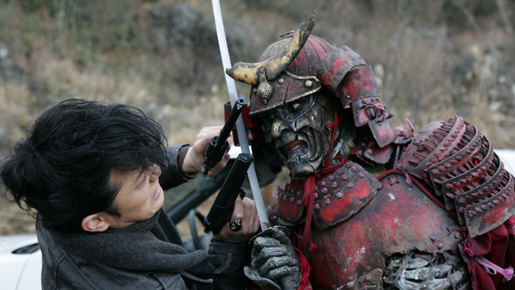
Temporal displacement for slashers need not always just come from the past, as the 1986 movie Biotherapy shows. This film has the staff of a laboratory getting stalked by a figure in a fedora and black trench coat, with the twist at the end that the killer is a super-evolved bacterium from the future who’s after a medication that the lab is going to develop. Extreme gore aside, the mystery, tension, and wild concept of the whole thing plays a lot like an episode of Ultraseven, completed by the presence of Shouji Nakayama (Captain Kiriyama himself) in one of the lead roles…he was also in Monster Heaven: Ghost Hero, now that I think about it.
Of course, the bacterium wouldn’t have necessarily needed to grow to the size of a full adult human to be an effective slasher; as any fan of Chucky or Leprechaun could tell you, a killer imp can be just as scary. Case in point: Tsuburaya’s 1985 direct-to-video flick Gakidama, which I’ve talked about in the past and will continue to do forever until it gets a US release. While the first half of the movie is more body horror, as a guy who swallowed a spirit coughs up a sentient, malicious ball of flesh, but it goes much more slasher in the later half as the creature then stalks the guy’s wife, including an attack in the shower.
Getting a little weirder with the tinier terrors, one could make the argument that the titular Hiruko the Goblin in Shinya Tsukamoto’s 1991 adaptation of Daijiro Morohoshi’s manga Yokai Hunter manga also works like a slasher, in that she lurks in the dark and stalks people around an abandoned school. Of course, she does so in the form of a severed head with spider legs sticking out of it, so it may depend on if you consider John Carpenter’s The Thing a slasher as well…until the end, where it turns into more of swarm situation. (This is another film with a Blu-ray release coming soon to the UK and US, by the way!)
Speaking of The Thing, that and Alien are certainly the main inspirations behind the 1987 anime movie Lily CAT, dealing with familiar themes of aliens, cyborgs, and…well, a cat on a spaceship. The same year, another OVA, Black Magic M-66, aped the original Terminator, with a killer android on a kill mission. I kind of miss the era when anime would make neat little low-horror flicks shamelessly lifting the plots from Hollywood horror flicks, especially with their own spin. (Yeah, Black Magic was technically a manga before Terminator came out, but the OVA isn’t all that close to its source material.)
Slashers, and subsequently slasher monsters, really peaked in popularity in the 80s and 90s, but subsequent eras have had shades of them continuing into the 2000s, even as the Japanese horror landscape shifted more towards zombies, ghosts, curses, and whatever the heck you call the things that Yoshihiro Nishimura does. Among the Sushi Typhoon generation, you can most make a case for the slasher/monster-ness Predator-inspired titular alien in 2010’s AVN – Alien vs Ninja, whose producer Yoshinori Chiba actually started his career with Zeiram. (Japanese AVP riffs aren’t just limited to that, as Junya Okabe also made a really neat fan short for ZVP – Zatoichi vs Predator!) Another cool suitmation baddie was from 2015’s Gemu, a short independent flick from Shingo Maehata, which riffs on Hiruko (and Garo) as a student and teacher fight a huge man-eating creature at school at night.
One of the shifts in the effects industry in the 21st century is a greater emphasis on adaptations of popular manga series, which tend to be long-form in a way not particularly conducive to the slasher movie format, but there are times where sections can have that vibe. For example, there’s 2010’s Gantz, which while mostly an action franchise, has some slasher vibes on its first mission when the hulking Onion Alien goes up against the first batch of helpless humans pitted against him. Gantz’s author Hiroya Oku also did Inuyashiki, which has an absolutely chilling cyborg serial killer as its villain, and got a movie in 2018.
Purely in terms of design, I have to give it up for 2008’s Negative Happy Chainsaw Edge, though, as the film with some of the most undiluted slasher DNA in its antagonist. Based on the debut novel of Tatsuhiko Takimoto (Welcome to NHK), it’s about a girl who’s forced to go out and do battle against a silent, chainsaw-wielding maniac on a nightly basis.
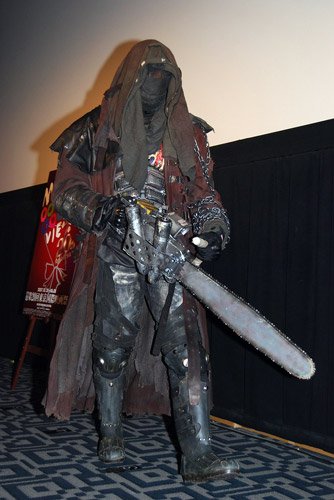
It’s tempting to leave it at that, but that’d be omitting a pair of the most noteworthy characters, for the taxonomically awkward reason that they’re not technically in Japanese movies, but rather Hollywood films based on Japanese games. However, being some of the most iconic of all Japanese monsters, and especially titans of this subgenre, I can’t fail to bring up Nemesis (from 1999’s Resident Evil 3) and Pyramid Head (from 2001’s Silent Hill 2), both of which go far beyond being just memorable boss fight monsters and became the face (or lack thereof) for their respective franchises and genres. Either one of these dudes probably inspired more nightmares than the rest of this list combined.
As mentioned earlier, both the slasher genre and Japanese horror have seen ebbs and flows over the decades, and with a decreased appetite for practical special effects and a studio system generally more averse to risk than in previous generations, it seems unlikely that there will ever be a return to the glorious (and under-appreciated) level of this style of monster flicks that we had in the 1980s. However, there’s still a lot to pick from, and hopefully some of these get license rescued from their current prison of Japanese VHS-only releases, and shared with generations to come. Many of the movies from this era are pretty short, so they’re the perfect thing to pop on for an hour or so to get into the spirit of the season. Happy Halloween!
The following has been cross-posted from Maser Patrol as a collaboration.
More Lists
Today, I will explore and rank an iconic character of the horror manga: Junji Ito’s Tomie. Tomie Kawakami is one of Junji Ito’s most popular characters and has become a… 2020 has been a turbulent year, with many productions being delayed into 2021, or outright canceled. However, that did not stop some great films from coming out in 2020. Here… It’s that time of year again when it’s dark at 2 pm and colourful lights and Christmas music assault the senses. But fear not, as we have a list of… You’d be forgiven, dear reader, for being incredulous at something as childish as Pokémon appearing on our page. Yes, yes. Straight Outta Kanto can imagine what you’re thinking. Pokémon is… As the holiday season approaches, many people look forward to cozy evenings by the fireplace dipping into the eggnog, and singing the Christmas classics. But holiday-themed horror movies offer a… Although psychological horror will always hold a special place in my heart, once in a while, everyone needs some blood and guts sprinkling the pages of their manga. Sometimes, it…Ranking Live-Action Performances of Junji Ito’s Tomie
The Grimoire of Horror Presents: The Best Films of 2020
11 Best Christmas Horror Films – Tree-mendous Scares Aplenty
Dark Side of Pokémon – The Scariest and Creepiest Monsters
Top Christmas Horror List – Ten More Movies to Add to Your Holiday Horror Watchlist
10 Most Gruesome and Gory Manga

A lifelong Japanese genre fiction fan, Kevin is the primary writer for the Maser Patrol blog. He also authored the book Kaiju for Hipsters: 101 Alternative Giant Monster Movies, is a frequent guest host on the Kaiju Transmissions podcast, and occasionally contributes to home video liner notes for tokusatsu releases. TLDR: he really likes talking about monsters.
